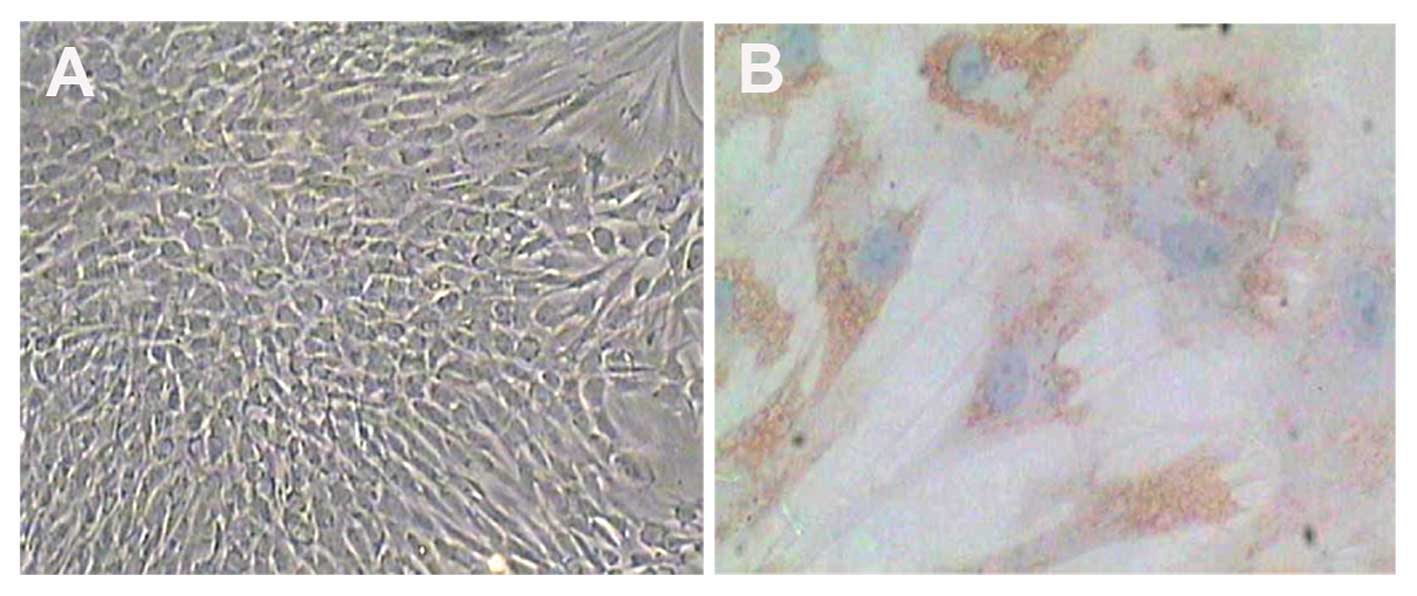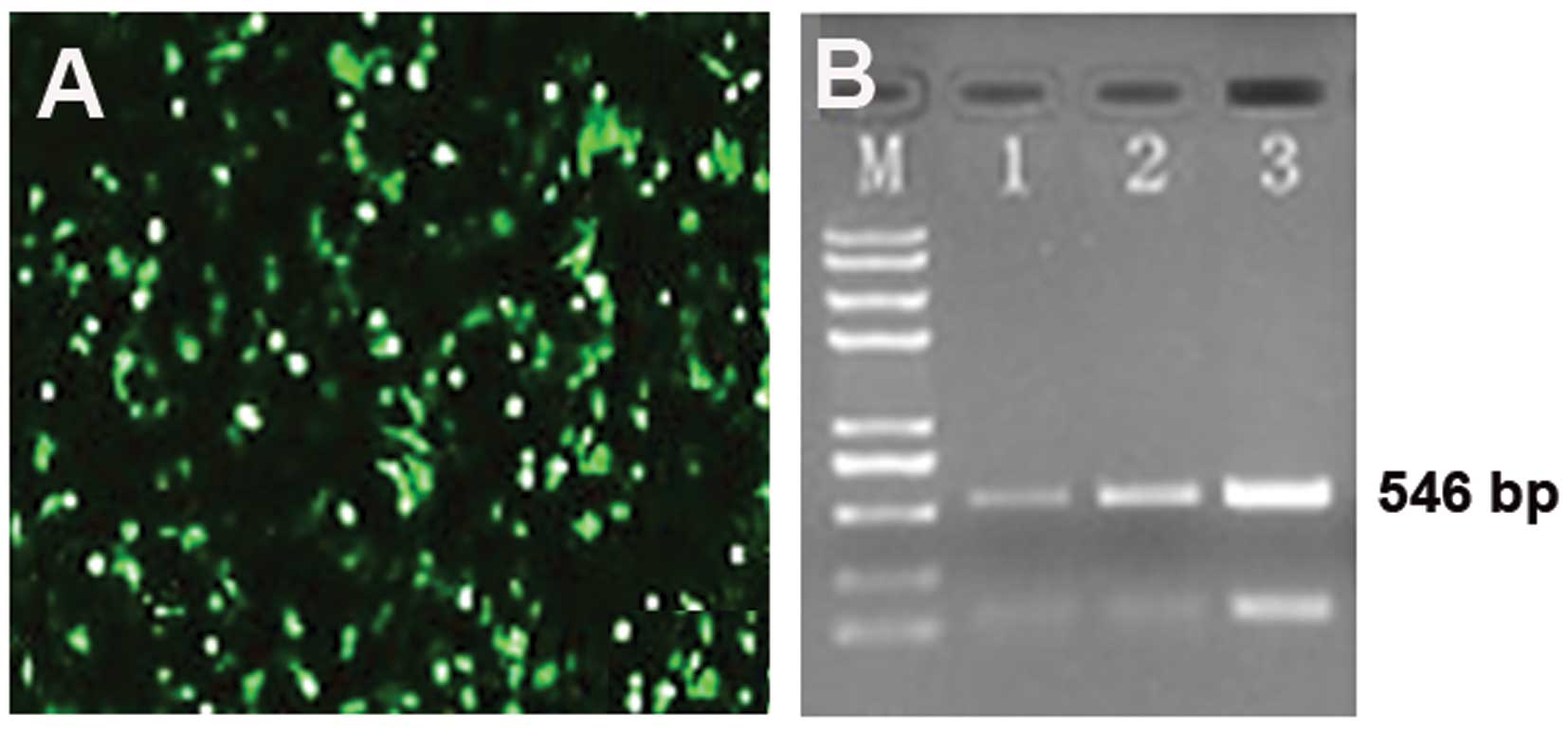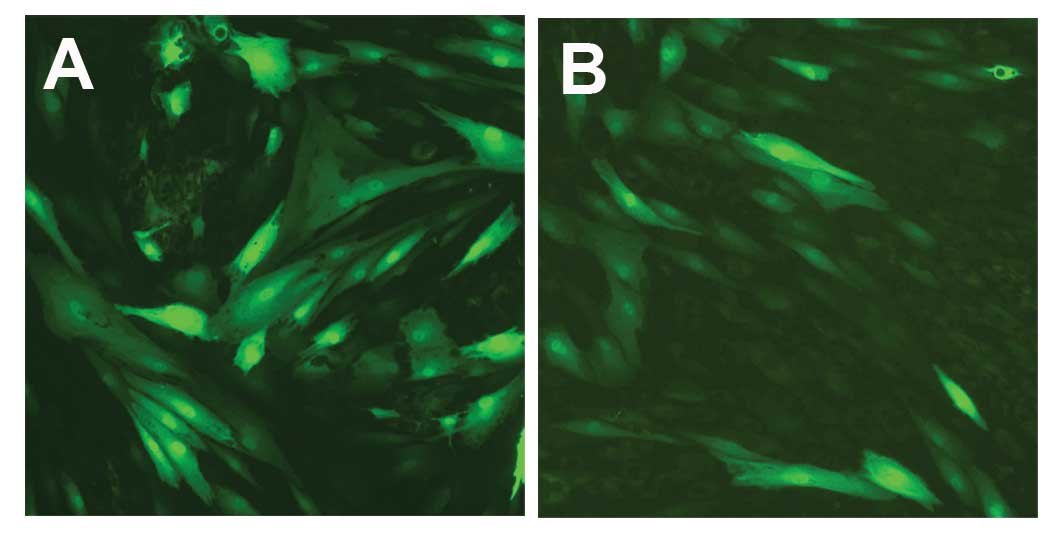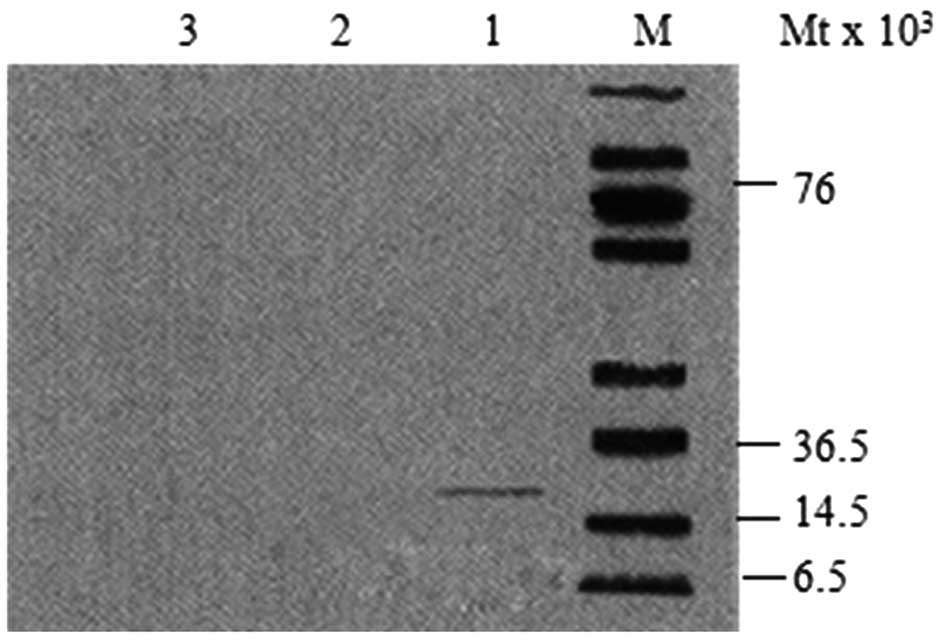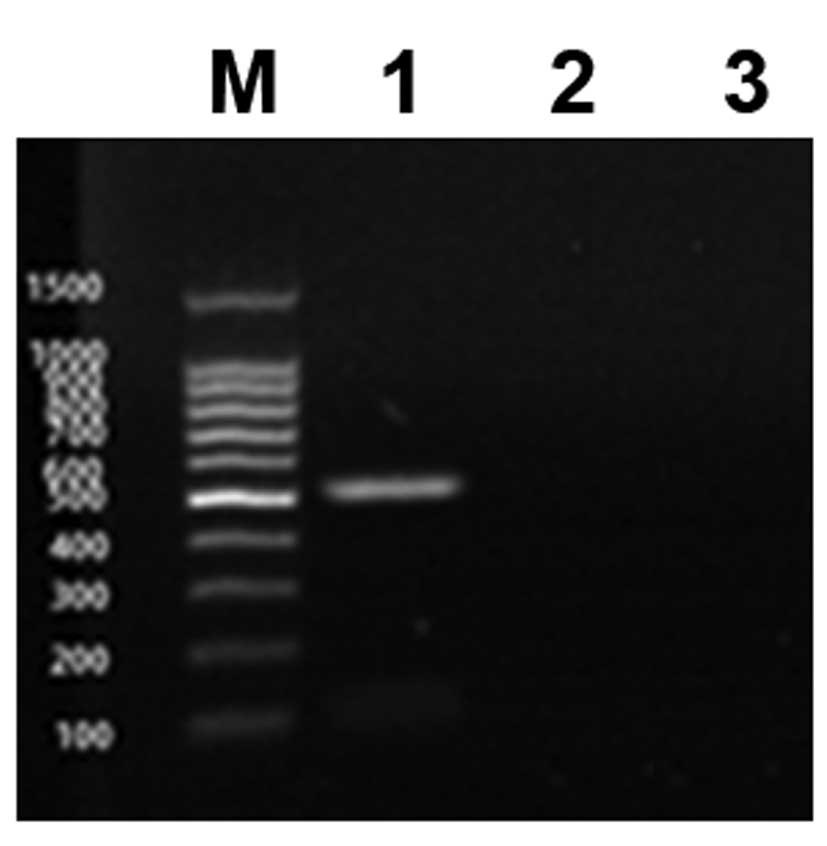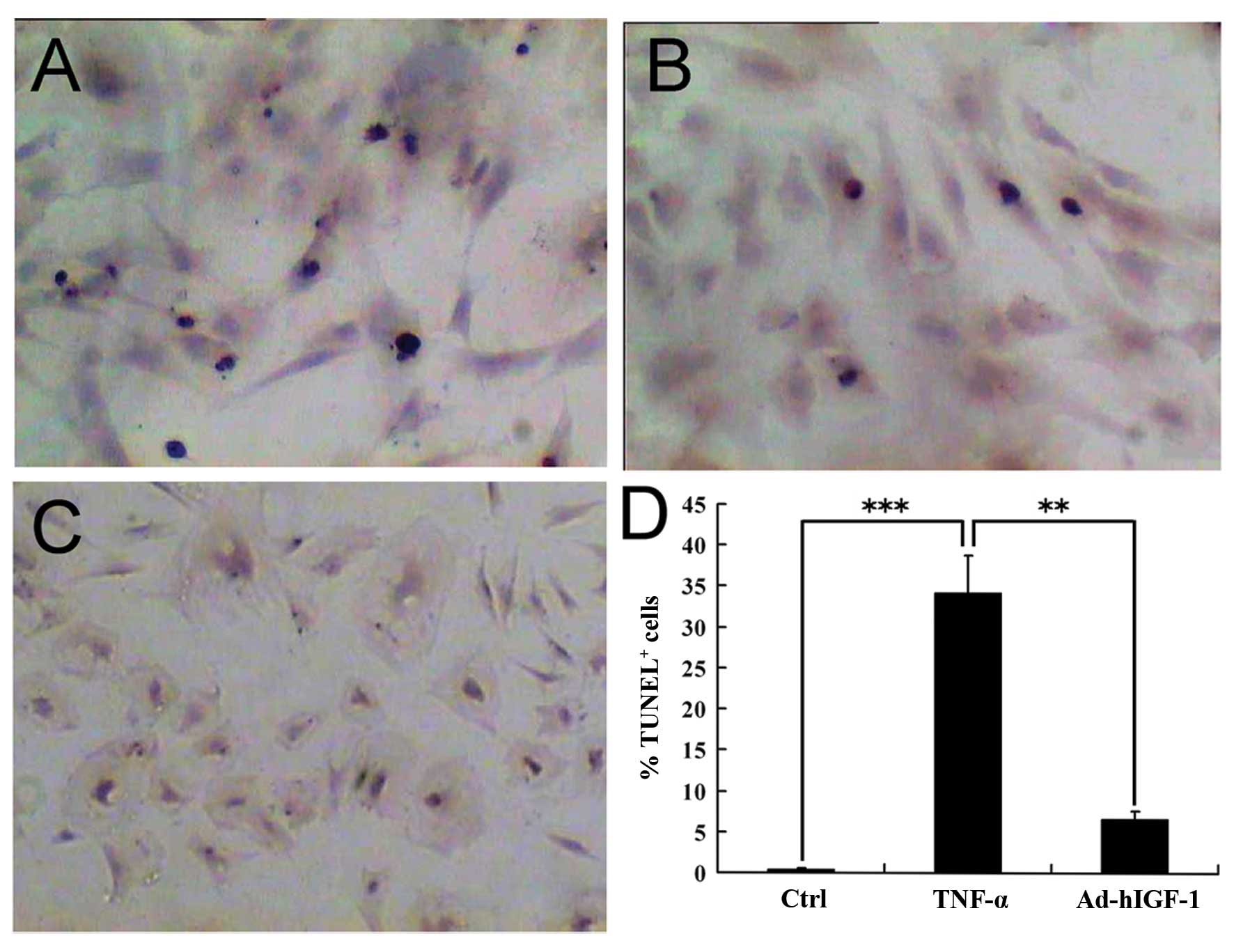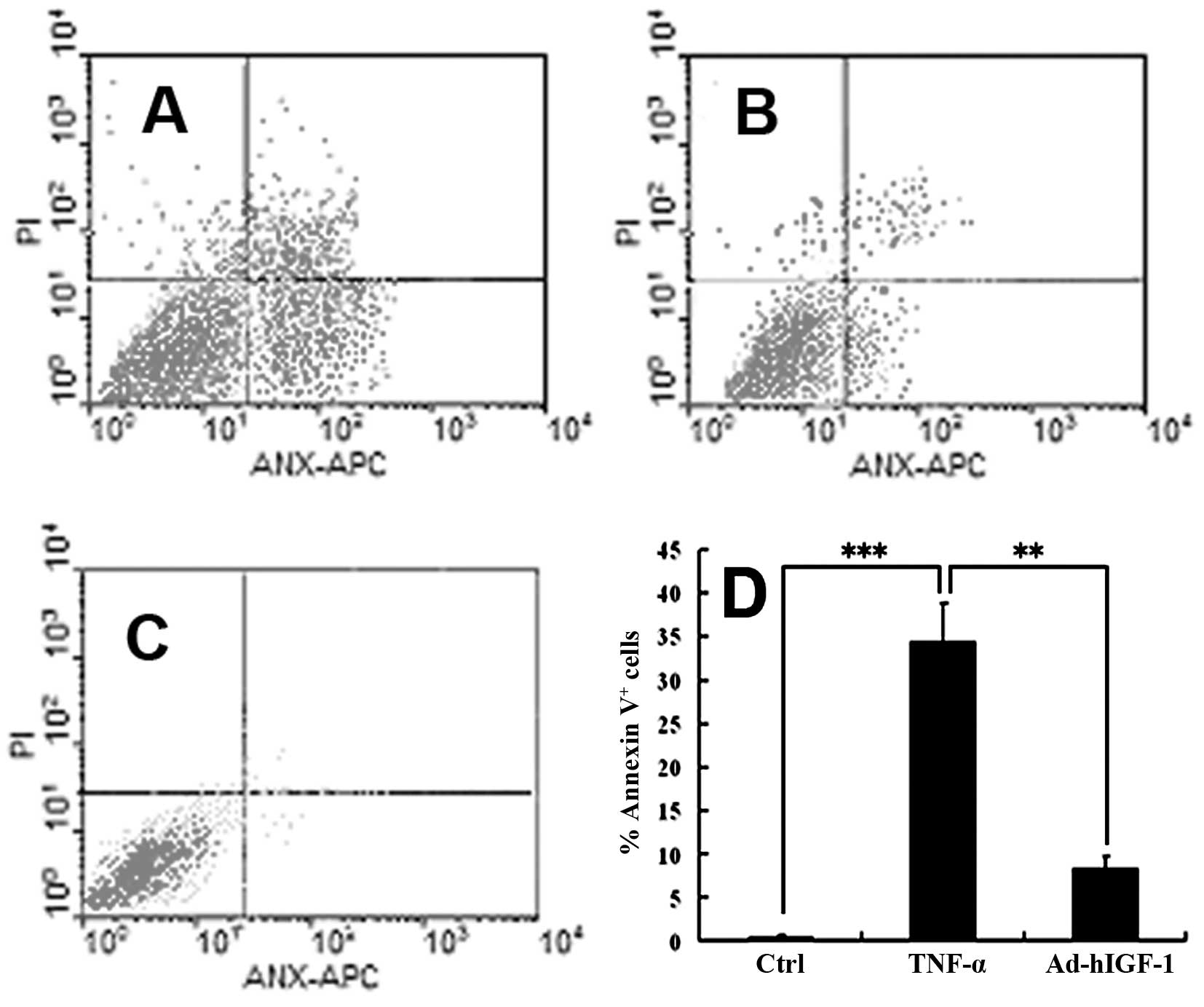Effects of adenoviral vector expressing hIGF-1 on apoptosis in nucleus pulposus cells in vitro
- Authors:
- Published online on: December 12, 2013 https://doi.org/10.3892/ijmm.2013.1586
- Pages: 401-405
Metrics: Total
Views: 0 (Spandidos Publications: | PMC Statistics: )
Total PDF Downloads: 0 (Spandidos Publications: | PMC Statistics: )
Abstract
The excessive apoptosis of cells of the nucleus pulposus may plays an important role in intervertebral disc (IVD) degeneration. It has been shown that the pro-inflammatory cytokine tumour necrosis factor (TNF)-α can induce disc cell apoptosis. Insulin-like growth factor (IGF)-1 can promote nucleus pulposus cell proliferation; however, whether or not IGF-1 inhibits TNF-α-induced apoptosis in the nucleus pulposus has not yet been elucidated. In this study, our objective was to create a potentially therapeutic viral vector, which could be used to achieve the enforced expression of IGF-1 in rabbit nucleus pulposus cells. Furthermore, we investigated the ability of IGF-1 to reverse TNF-α-induced apoptosis in cells of the nucleus pulposus. Isolated nucleus pulposus cells were cultured to a confluent monolayer, digested with collagenase Ⅱ and purified using trypsin and differential adhesion methods. Nucleus pulposus cells were positively identified using type Ⅱ collagen immunohistochemistry. Following transfection with adenoviral vectors engineered to overexpress recombinant human IGF-1 (Ad-hIGF-1) or TNF-α, the cells were observed under a light microscope. Terminal deoxynucleotidyl transferase (TdT)-mediated dUTP-biotin nick end-labeling (TUNEL) and flow cytometry (FCM) were used to assess the rate of apoptosis. The Ad-hIGF-1 viral vector was effectively transduced into the nucleus pulposus cells and increased IGF-1 expression as confirmed by RT-PCR and western blot analysis. In the TNF-α-treated group, a large number of apoptotic cells was observed that exhibited morphological changes associated with this form of cell death. Minimal apoptosis was observed in the Ad-hIGF-1-treated group and the control group showed no obvious signs of apoptosis. TUNEL assay revealed that the rate of apoptosis in the Ad-hIGF-1 group was significantly reduced compared with the TNF-α-treated group (P<0.01). This result was confirmed using FCM. The rate of apoptosis was also significantly increased in the TNF-α-exposed cells compared with the control group (P<0.01). Our findings strongly suggest that the adenoviral vector expressing hIGF-1 can successfully infect nucleus pulposus cells in vitro and effectively enhance the expression of IGF-1. In addition, IGF-1 reversed the TNF-α -induced apoptosis of nucleus pulposus cells. Thus, Ad-hIGF-1 may be useful in the development of clinical interventions for disc degeneration.



